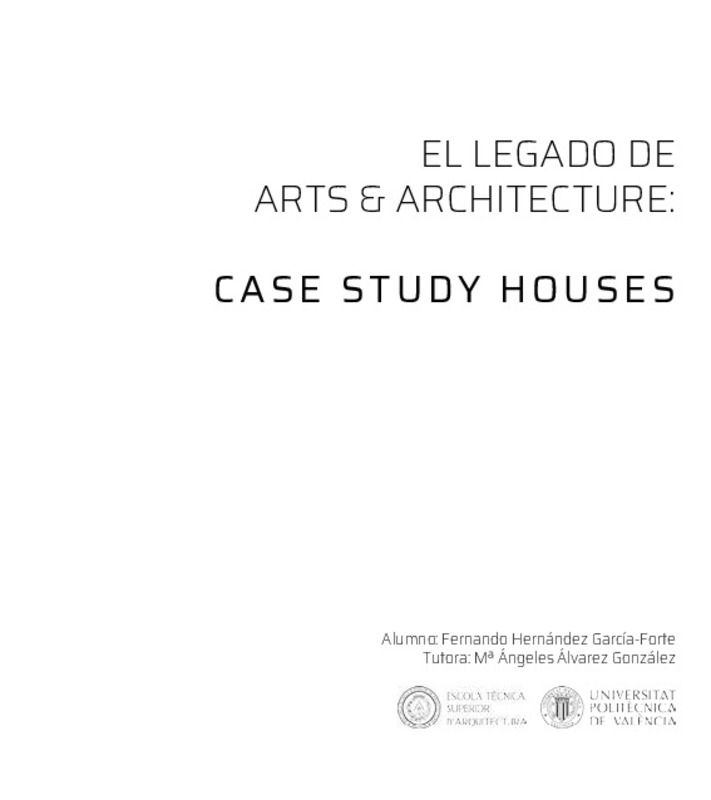JavaScript is disabled for your browser. Some features of this site may not work without it.
Buscar en RiuNet
Listar
Mi cuenta
Estadísticas
Ayuda RiuNet
Admin. UPV
El legado de Arts &Architecture : Case Study Houses
Mostrar el registro completo del ítem
Hernández García-Forte, F. (2017). El legado de Arts &Architecture : Case Study Houses. http://hdl.handle.net/10251/107983
Por favor, use este identificador para citar o enlazar este ítem: http://hdl.handle.net/10251/107983
Ficheros en el ítem
Metadatos del ítem
| Título: | El legado de Arts &Architecture : Case Study Houses | |||
| Autor: | Hernández García-Forte, Fernando | |||
| Director(es): | ||||
| Fecha acto/lectura: |
|
|||
| Resumen: |
En enero de 1945, la revista californiana Arts & Architecture, lanzó el programa Case Study House, un proyecto complejo cuyo objetivo era dar solución a los problemas de vivienda a los que se enfrentaba Estados Unidos en ...[+]
In January 1945, the Californian magazine Arts & Architecture, launched the Case Study House Program, a complex project whose aim was to solve the housing problems faced by the United States in the postwar period.
This ...[+]
|
|||
| Palabras clave: |
|
|||
| Derechos de uso: | Reconocimiento - No comercial - Sin obra derivada (by-nc-nd) | |||
| Editorial: |
|
|||
| Titulación: |
|
|||
| Tipo: |
|
Localización
recommendations
Este ítem aparece en la(s) siguiente(s) colección(ones)
-
ETSA - Trabajos académicos [4687]
Escuela Técnica Superior de Arquitectura







